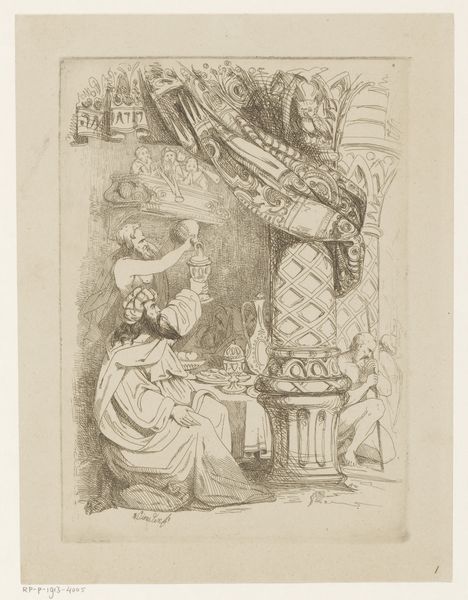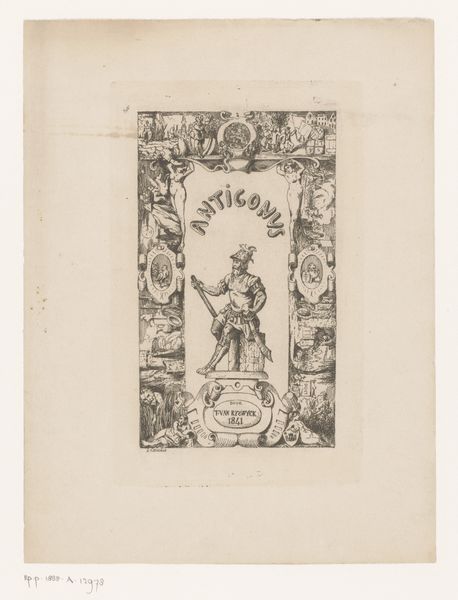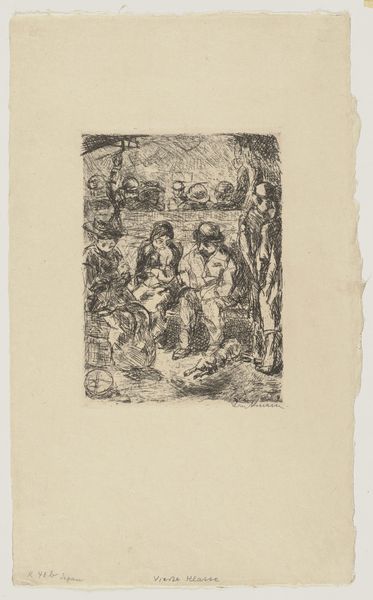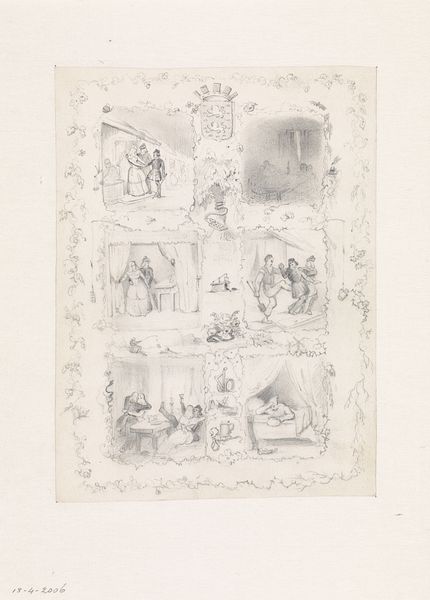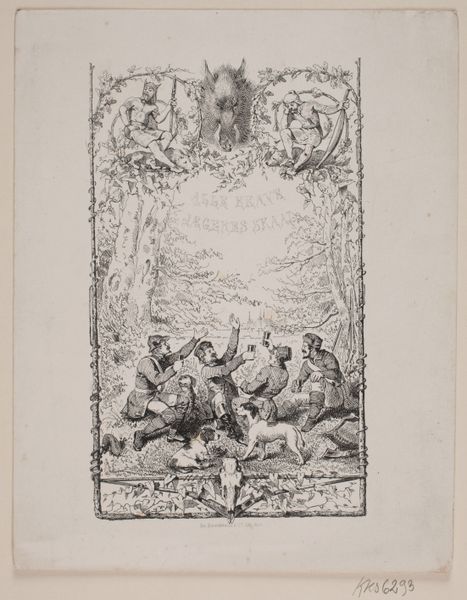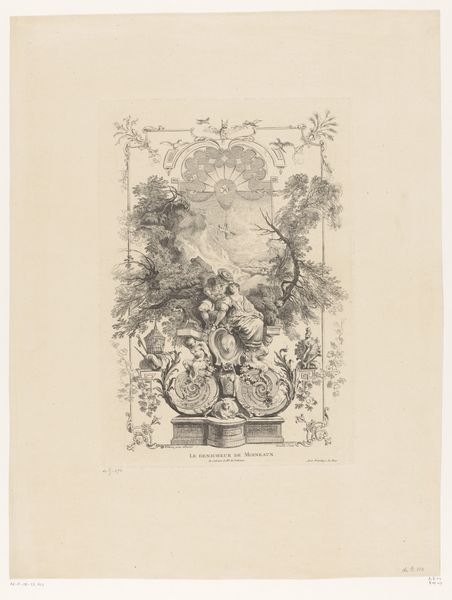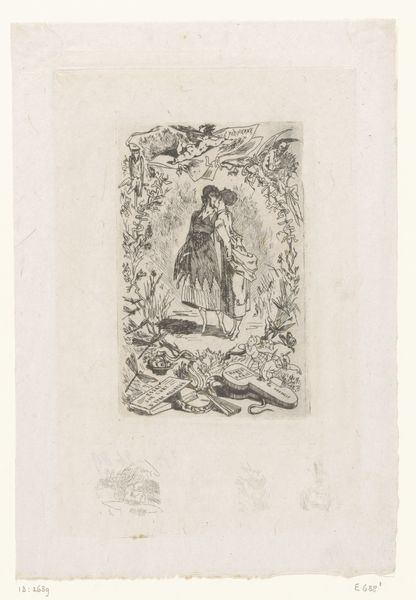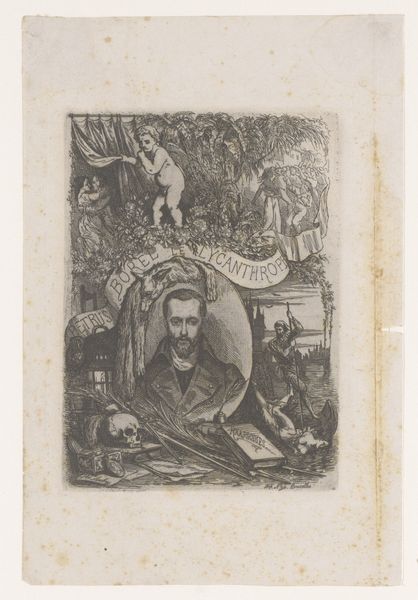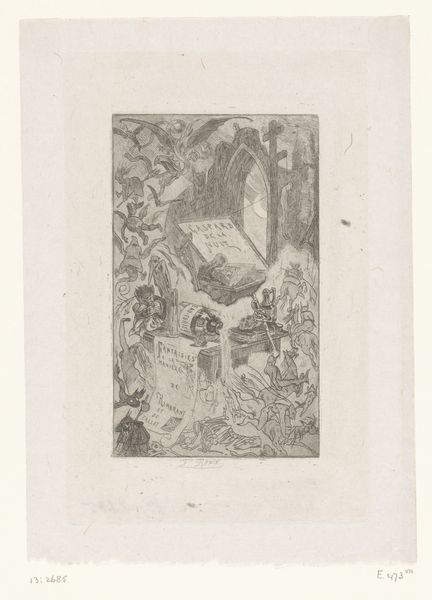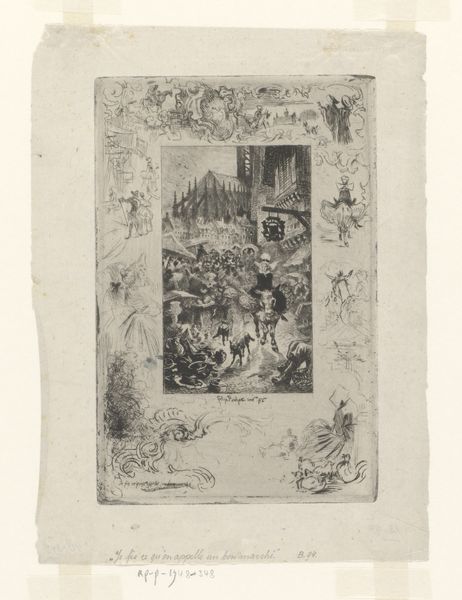
Dimensions: 211 × 136 mm (plate); 297 × 215 mm (sheet)
Copyright: Public Domain
Curator: Rodolphe Bresdin, a decidedly independent artist, produced this etching, "Frontispiece for the Revue Fantaisiste," in 1861. It now resides at the Art Institute of Chicago. Editor: My first impression is of controlled chaos. A dreamy landscape crowded with figures, text…almost overwhelming. Is the artist making a statement about artistic or literary movements perhaps? Curator: Well, it's an etching, so we have to consider Bresdin's engagement with printmaking's broader function as a tool for mass dissemination. It was intended to promote the “Revue Fantaisiste,” a short-lived but significant journal associated with Romanticism in France, a periodical interested in, and providing space for, rising writers of the day. Editor: The figures are allegorical. I see cupids above, classical figures flanking some kind of…altar? And what are these masked figures doing there, almost hidden in the shadows? I feel there's commentary here on creativity itself, on its muses and perhaps its hidden or darker aspects. Curator: What’s striking is the clear labour required to pull off something so minutely detailed. Bresdin clearly invests time in building the intricate patterns that crowd the image, reflecting the commitment, even endurance, needed to develop and finally realize such a piece. The long list of names, like that of Théophile Gautier, further underscore the work required to contribute to the collective project represented by the "Revue Fantaisiste". Editor: Yes, those names integrated directly into the etching. But let’s linger on those masked figures. They remind me of commedia dell'arte characters. They could symbolize the artifice inherent in artistic expression or perhaps comment on satire within the Revue. Curator: Or, turning again to the process: each line, each figure, a result of careful biting with acid. An art that requires planning, foresight. Here is both a commitment to craftsmanship, and a commercial intention: to get readers invested in subscribing to the journal represented in the work. Editor: Considering these details, the artifice becomes layered, a commentary of craft within craft, symbolism wrapped inside the constraints of the creative act. Thank you. I look at this in a fresh light now, and am interested to know more of the details in “Revue Fantaisiste”. Curator: As am I. The intersections of medium, making and intention really expand our understanding of this piece, don't they?
Comments
No comments
Be the first to comment and join the conversation on the ultimate creative platform.
